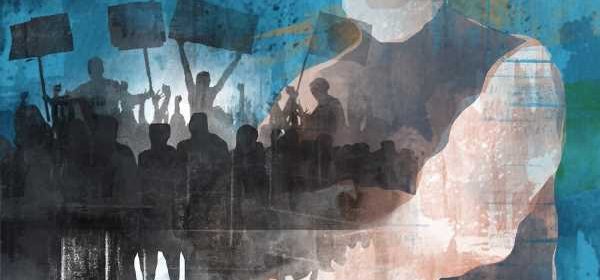How India Can SHOCK-PROOF Economy

Since jobs will remain scarce for the foreseeable future, an unemployment allowance should be the next big social-security initiative, suggests T N Ninan.
Crises in the Indian economy used to be the ‘normal’.
In the 12 years from 1962 to 1974, India fought three wars, suffered four droughts that produced famine in places like Bihar, and lived through the first oil shock, which saw a quadrupling of crude oil prices.
The country also endured sustained double-digit inflation, which peaked at 26 per cent, and in 1966 had to devalue the rupee by 36 per cent.
There were policy misadventures like the short-lived government takeover of the wholesale trade in foodgrains.
Inevitably, given the context, there was political turmoil (a split in the ruling Congress) and protest movements: Massive labour strikes, the birth of Naxalism, and the movement led by Jayaprakash Narayan that resulted in the imposition of Emergency rule in 1975.
There hasn’t been a period like that in the half-century since, though the country has lived through subsequent oil shocks (one of them combined with a drought to shrink GDP by 5 per cent in 1979-1980), the Khalistan and Kashmir challenges to nationhood, the 1991 foreign exchange crisis, the Asian and then global financial crisis, and so on.
These were episodic, not the norm, but they have become more frequent.
In recent years there has been the ‘twin balance-sheet crisis’ of debt-laden companies and near-bankrupt banks, the demonetisation of 2016, three waves of the Covid pandemic, the lockdown of 2020, and now yet another oil shock.
So how does one shock-proof the economy? The food shortages are over; in their place, there is a problem of surplus.
The reserves of foreign exchange are more than comfortable, inflation has been trending lower, and therefore the currency is more stable.
The risk of an oil price shock has been partially mitigated by building an oil reserve, whose capacity probably needs to be doubled once oil prices fall.
There is a larger problem of energy dependence on imports, for which there is no solution since for the foreseeable future the country will remain one of the biggest importers of oil, gas, and coal.
At the firm level, corporate balance sheets are more solid than before — debt-equity ratios have improved, as have profit margins, and overseas debt is being discouraged.
Banks are better-capitalised, and there are fewer zombie firms that lock up capital in half-dead enterprises.
Although protectionist walls have been going up, the economy remains substantially exposed to international competition and provides proof of external viability.
The action needed by firms is to build buffers against supply shocks, and to re-calibrate any just-in-time programmes.
In strategic sectors like defence, there needs to be a concerted indigenisation push.
Meanwhile, some markets now have greater depth, more players, and therefore more stability.
There is also greater transparency and better regulation — with scope for improvement in both.
If there continue to be implosions like IL&FS, it is because boards of directors, the auditing firms, and credit-rating agencies are not doing their jobs as they should — a governance challenge that needs scrutiny.
At the level of the individual, India now offers some elements of a safety net: The food security programme for two-thirds of the population, the rural employment guarantee scheme, which needs to be better funded, the rolling out of a free health insurance programme for the bottom half of the population, and modest cash payments to different categories of indigents (like the old-age pensions that need to be stepped up).
More can be done to minimise the premature deaths that push vulnerable families into crisis, but public health budgets remain low.
However, the toilet and tap-water programmes should improve sanitation, and more cooking gas connections improve women’s health.
Better road engineering is needed to reduce the high toll of traffic accidents.
In the absence of a basic income guarantee, such steps will improve income security.
What remains is the best safety net that can be offered: Jobs.
And not any jobs, but better-quality jobs for better-qualified people so that more of them get a living wage.
This needs a larger macro-economic transformation, which will take time.
Since jobs will remain scarce for the foreseeable future, an unemployment allowance should be the next big social-security initiative.
Feature Presentation: Aslam Hunani/Rediff.com
Source: Read Full Article
